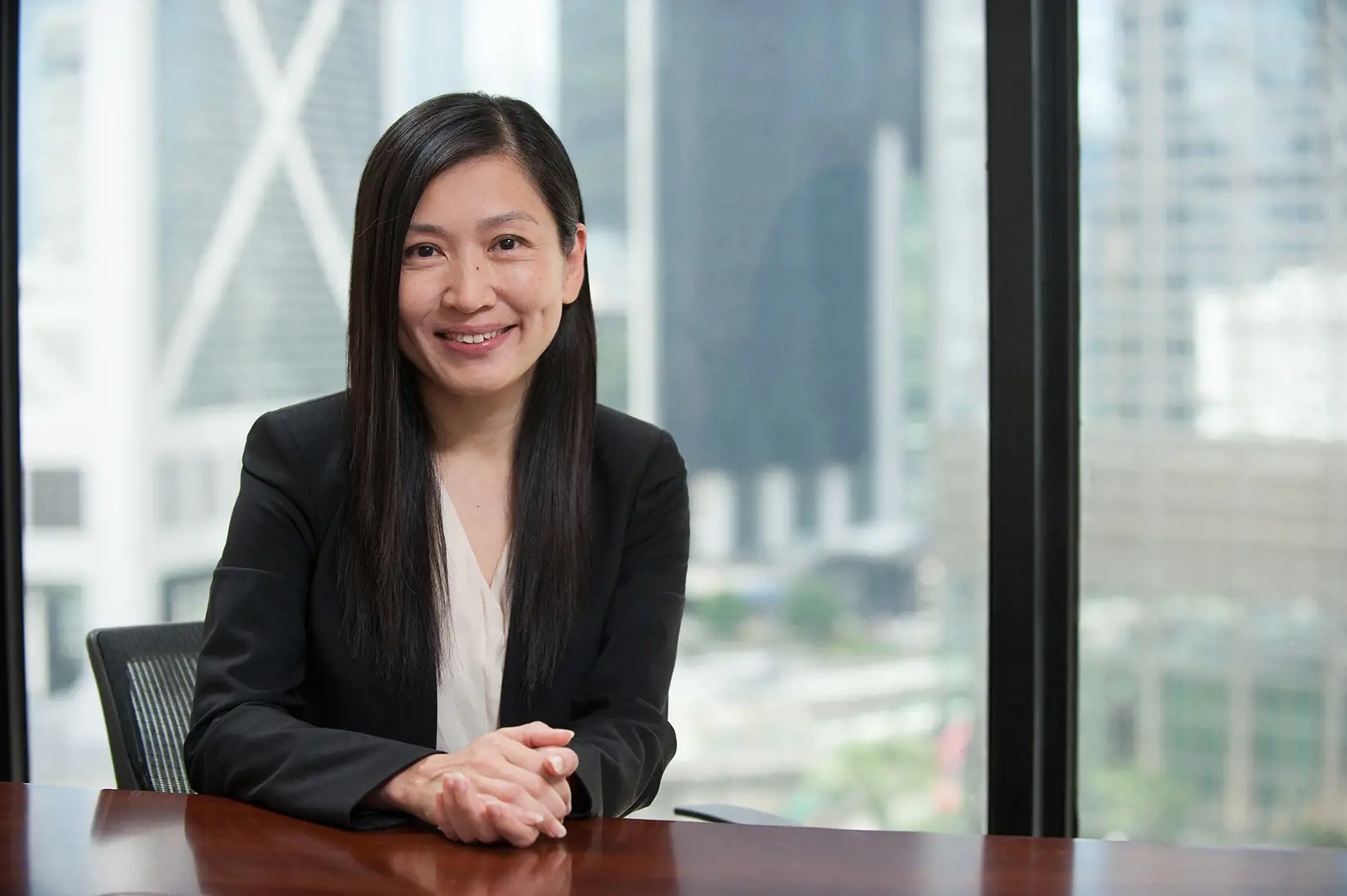In the second part of our global healthcare webinar programme, our experts in Hong Kong, Thailand, Denmark, France, Ireland, Spain and Canada have provided insights into the healthcare system and medical malpractice claims within their jurisdictions. Here we highlight some of the key areas discussed.
View part one: Global healthcare insights: Israel, Iberia, Latin America, the Caribbean and Australia
Hong Kong
Hong Kong has 43 public hospitals and institutions managed by the Hospital Authority, and many general and specialist clinics managed by the Hospital Authority and Department of Health. There are also 13 private hospitals, including the newly opened CUHK Medical Centre, and many private day procedure centres, clinics and nursing homes.
When there is a medico-legal incident, a claimant (or plaintiff) in Hong Kong (who is usually the patient, or in the case of a deceased individual, their family member) can bring a civil claim in court seeking compensation (medical negligence claim). In a deceased case, at times, an inquest will be held in the Coroners’ court to investigate into the cause of and circumstances leading to death, and the evidence given at the inquest will greatly impact on the merits of the parallel medical negligence claim.
If the plaintiff is claiming for less than HK$3 million (approximately £280) proceedings must be commenced in the District Court. For claims exceeding HK$3 million, proceedings must be commenced in the Court of First Instance of the High Court.
The duration of most medical negligence claims is between one to four years. Particularly complex cases, for example where there are a high number of liability and quantum experts, the claim may take several more years to be resolved. The pandemic has also had an impact on the duration of cases but this is now improving.

Mediation is commonly used in Hong Kong and almost always attempted in medical negligence claims.
Following Civil Justice Reform in 2009 courts in Hong Kong have been more proactive in case management and have imposed stricter deadlines for parties to prepare court documents or to set the case down for trial. They are also more intolerant of delays and late discovery and expect parties to cooperate with each other in the conduct of proceedings and identifying issues to be resolved at trial.
Courts also encourage parties to reach a settlement out of court, so a trial is not necessary. Parties now have to have pre-action discussions, and the plaintiff is required to send a pre-action letter to the medical professional. There should be mutual discovery of documents, even at the pre-action stage, and if any party is found to be uncooperative, that party may be penalised by paying the other party’s legal costs.
The plaintiff is also expected to disclose an independent expert report to support the allegations against the medical professional. Failing which, the defendant can apply to court to ask the claim to be struck out. If the plaintiff disclosed an expert report, and the defendant disclosed theirs - the experts would need to meet and discuss in order to try to limit the issues in dispute.
Damages awards have increased steadily in Hong Kong, but not significantly.
Many people live in public housing estate flats so if a plaintiff has become wheelchair bound after a medical incident, courts will allow the cost of alternative accommodation, usually by renting a more suitable and spacious flat. Care costs such as hiring a live-in domestic helper may be awarded in catastrophic injury cases.
Discount rates were adjusted in 2013 after the case of Chan Pak Ting and it provides three different rates, depending on how long the plaintiff’s future needs are expected to last for. The relevant rates are 2.5% for loss which is more than 10 years, 1% for loss between five and 10 years and minus 0.5% for loss which is less than five years. It would appear that these rates will not be adjusted for some years yet.
Mediation is commonly used in Hong Kong and almost always attempted in medical negligence claims, unless of course the plaintiff’s claim has been dismissed or a settlement has been reached prior to attempting mediation.
Many medical professionals favour mediation, because it is a confidential process, and allows parties - typically the patient and treating doctor - to meet face-to-face to explain matters, including the treatment provided.
The success rate of mediations is very high. According to the figures published by the Hong Kong Judiciary, approximately 47% of civil claims commenced in the Court of First Instance which had attempted mediations, resulted in agreements. The District Court also has similar figures.
Periodical payments have been discussed in Hong Kong for many years but currently courts are still not empowered to order periodical payments. However, parties can agree to periodical payments if they so wish.
In Hong Kong, there are many different regulatory boards or councils which regulate the practice of medical/healthcare professionals. The majority of our work mainly involves disciplinary investigations against medical doctors.
Complaints to regulatory bodies cannot be settled directly between the complainant and the medical/healthcare professional. Unless the complaint is dismissed during the preliminary investigation stage, it has to go through an open inquiry hearing which will usually be reported by media.
If the medical/healthcare professional is found guilty of professional misconduct, they may not be able to continue practice medicine or provide healthcare services, or at least for a certain period of time.
According to the latest annual report issued by the Medical Council of Hong Kong (MCHK) in 2019, there were 3,286 complaints received by the MCHK in 2019, which is almost five times higher than the number of complaints received in 2018 and in previous years.
We consider below are the key factors contributing to the sharp increase in the number of complaints in 2019:
- A shortage of medical and healthcare staff at all levels and increasing demand on health services due to the aging population.
- Easy access of the medical information on internet allows patients to challenge doctors’ advice and management more readily which encourages the development of a complaint culture in Hong Kong.
- Greater awareness of the channel for reporting a complaint, which is relatively simple and economic to use, as it does not involve any court fees. The MCHK will investigate the complaint and will take the burden of proof of professional misconduct against the doctor.
Cases received by the MCHK are screened by a Preliminary Investigation Committee (PIC), and quite a high percentage of complaints are dismissed. In recent years, the majority of complaints against doctors have related to allegations of issuing misleading or false medical certificates, the provision of negligent treatment, and inappropriate prescription of drugs.
Only a small proportion of complaints received by the MCHK proceed to an inquiry hearing. In 2019, the PIC experienced a significant backlog.
Upon receipt of a complaint, either the Chairman/Deputy Chairman of the PIC will perform an initial screening of the complaint. If they consider the case is frivolous/groundless or the complaint does not fall within the jurisdiction of the MCHK, the complaint will be dismissed.
If the complaint is not dismissed it will be referred to the committee for consideration. The PIC will issue a Notice to the doctor notifying them of the complaint and the doctor can choose to provide a written explanation for consideration during the PIC meeting, or to wait for the outcome of the first PIC meeting.
At the Inquiry, the doctor can be found guilty or not guilty. The doctor can appeal to the Court of Appeal in relation to the conviction or sentence or both.
If the Inquiry Panel find the doctor guilty of professional misconduct, the doctor will be given an opportunity to make a submission on mitigation at the hearing. The Inquiry Panel will then take into account the seriousness of the charges, the conduct of the doctor throughout the process of the complaint handling, the mitigation submission and documents, and any past records, in deciding the appropriate sanction.
Currently, it takes approximately one year following receipt of the first Notice from the PIC and for the PIC to investigate and dismiss a complaint. For those cases that proceed through to an Inquiry the process can take approximately two or more years. However, for cases involving more than one defendant doctor, we have seen a delay in fixing the Inquiry as the investigation on the part of PIC may take longer.
The number of medical negligence claims has remained fairly stable over the past few years. We anticipate there could be a slight decrease in the number of claims next year due to the suspension of some hospital services during the pandemic.
However, in the coming year (2021/2022), we anticipate that the number of complaints to disciplinary bodies may continue to increase.
We have also seen an increase in the number of patients who have reported medical incidents to the police, with an increase in the number of criminal investigations and convictions especially those cases connected with aesthetic/cosmetic medicine.
We anticipate a slight decrease in medical negligence claims next year due to the suspension of some hospital services during the pandemic.
Contacts
Thailand
In Thailand, there are no specific laws governing or dealing with medical malpractice so the process will depend on relevant rules and regulations based on how a claimant initiates the claim.
In any event, compensation is determined pursuant to the wrongful act under the Civil and Commercial Code. In some medical malpractice claims, the National Health Security Act or the Consumer Protection Act may also come into play when determining compensation.
In practice, there are four main routes through which medical malpractice claims may be initiated:
Firstly, and it is the most common practice in Thailand for a claimant to make a claim against a doctor, nurse or a hospital directly, either verbally or in writing. In most cases, if not all, the claimant will also refuse to pay medical bills. As a consequence, the process and handling of the claim, and negotiation or settlement will be regulated by the Civil and Commercial Code.
In some cases, the claimant may file a complaint to a competent authority such as the Medical Council of Thailand or the National Health Security Office. In this regard, the claim process differs. For example, if the claim is filed with the Medical Council of Thailand, the Medical Council will act according to their power and authority under the Medical Profession Act.
The Medical Council will then provide its opinion as to whether medical malpractice has occurred or if the relevant medical practitioner failed to comply with professional regulations. Whilst the opinion of the Medical Council is not binding it can often promote settlement.
Alternatively, if the claim is filed with the National Health Security Office (NHSO), the committee may summon the relevant doctors or hospital to provide information and statements.
If the NHSO considers there was medical malpractice, the NHSO has the power to award compensation to the claimant and subrogate the right to recover that from the hospital. However, compensation under the NHSO Act is relatively low compared with compensation that can be recovered under the Civil and Commercial Code. The maximum is less than £9,000.
In most cases, if settlement cannot be reached through negotiation or where the claim has not been made directly against the doctor or hospital, the claimant may file a claim at the Civil Court.
Under the Thai legal system, medical service is determined to be a business falling within the scope of the Consumer Protection Act. As such, the claim process will be based on the Consumer Case Procedure Act.
The last common route by which a claimant may file a claim against a doctor is at a police station, on the basis that the claim involves bodily injury or death of the patient. In the absence of specific laws dealing with medical malpractice, all medical malpractice claims in Thailand can be considered criminal offences under the Criminal Code, with the claim process in those circumstances based on criminal proceedings.

Under the CCPA, the court has discretion to grant punitive damages up to twice that of compensation granted if the court considers the medical malpractice is gross negligence or intentional.
Compensation
Regarding a claimant’s entitlement to compensation in medical malpractice claims in Thailand, compensation is based on actual losses. Such losses must also be supported by laws such as the Civil and Commercial Code.
In some cases, non-monetary damages may be awarded. However, it has to be proven that the loss or damage is severe and/or the patient is unable to enjoy their normal life. This compensation will be determined by the court.
Under the Consumer Case Procedure Act, the court has discretion to grant punitive damages up to twice that of the amount of compensation granted to the claimant if the court considers the medical malpractice is gross negligence or intentional.
Denmark
Denmark has a predominantly public healthcare system, with a small private sector. The public healthcare system is financed and driven by five local healthcare Regions.
All Regions are self-insured, however insurance companies can be granted a concession to underwrite. All Regions (hospitals and other healthcare providers) are liable according to The Patient Insurance Act.
Denmark, Sweden, Norway, Finland and Iceland have similar systems - claims are made by notice to The Patient Insurance Authority, the idea being to facilitate high quality and fast claims handling and that the patient does not need legal assistance. The Authority investigates the claim, with medical consultants providing a decision on liability or otherwise.
Denmark has a predominantly public healthcare system, with a small private sector. The public healthcare system is financed and driven by five local healthcare Regions.
Both the patient and the Region can appeal the decision to the Appeal Board. The Appeal Board makes the final administrative decision, following a review by different medical consultants. The chairman of the Appeal Board is a judge and the members are two medical specialists, one legal specialist, representatives from the Regions, representatives from the insurance industry and representatives from different patient organisations.
Following this, if the patient or the Region remains unsatisfied with the decision an action can be brought against the Appeal Board through the courts.
The assessment of damages is regulated by the Danish Liability Act 1984, which enables the recovery of temporary and permanent medical expenses, including treatment, up to a maximum of ten years, with any public benefits to be deducted. Damages (for the following losses by way of example) are limited as follows (2021 figures):
- Permanent injury: maximum DKK1.126.000 (€151.140).
- Pain and suffering: maximum DKK82.000 (€11.006).
- Temporary loss of income: no maximum but usually a limited period until permanent loss of income is paid.
- Permanent loss of income: maximum DKK 9.859.500 (€1.323.422).
Contacts
France
Between 2019 and 2020 there have been an increasing number of claims against healthcare institutions and professionals in France, with surgery, general medicine and anaesthesia/resuscitation as the three areas of healthcare where medical malpractice claims are the most prevalent.
Assessment of damages
In France, the assessment of injuries is subject to adversarial appraisal (based on expert evidence and a case by case analysis, either in a judicial or amiable context). The assessment of damages is left to the sovereign power of the judge which can lead to significant disparities in amounts awarded. Under the principle of full compensation there are no punitive damages and no obligation for the plaintiff to mitigate their loss.

The assessment of damages is left to the sovereign power of the judge which can lead to significant disparities in amounts awarded.
Increasing recourse to amicable settlement of medical malpractice claims
In 2002, French law has introduced a specific scheme to provide a faster and better compensation for claimants - the Commission de Conciliation et d’Indemnisation (CCI) (i.e. Conciliation and Compensation Commission (CCC)).
The CCC is expressly entrusted with the task of promoting the amicable settlement of disputes relating to medical accidents, hospital-acquired infections, iatrogenic conditions, and other disputes between healthcare institutions and users. The Commissions have two main objectives: to provide quick, free and amicable compensation to victims of medical accidents, and to facilitate amicable resolution of disputes arising between plaintiffs and medical professional, both in cases of medical malpractice and in cases of medical hazard, in the absence of any negligence from a healthcare professional. The CCC issues non-binding opinions in which it indicates the applicable compensation regime.
In 2020, 4,500 claims were filed with the CCCs (compared with 4,612 in 2019), with 3,700 opinions issued by the CCCs. The figures for 2020 indicate an increase in the average amount of compensation awarded by the CCC, from €114,000 to €125,000, with five plaintiffs (out of a total of 1050 who obtained compensation) receiving compensation in excess of €1 million.
Contacts
Ireland
Among the key areas of discussion in relation to clinical negligence claims in Ireland was the recent introduction of the Judicial Council Personal Injuries Guidelines 2021 and the latest developments in relation to the personal injury discount rate.
Judicial Council Personal Injuries Guidelines 2021 (the Guidelines)
The Guidelines came into effect on 24 April 2021 replacing the Book of Quantum in terms of assessment of general damages for cases post-April 2021 and are applicable to medical negligence claims. The Book of Quantum will continue to apply to personal injury proceedings commenced prior to 24 April 2021. This means there will be a dual system in place for the foreseeable future where both the Book of Quantum and the Guidelines will be in use.

With the introduction of the Judicial Council Personal Injuries Guidelines 2021 there has been a significant reduction in general damages awards.
With the introduction of the Judicial Council Personal Injuries Guidelines 2021 there has been a significant reduction in general damages awards. Judges are now also required to provide reasons for any departure from the Guidelines when awarding general damages.
Statistics from the Personal Injuries Assessment Board (PIAB) (Values Report October 2021) highlight the following dramatic changes in the personal injury sphere, post the introduction of the Guidelines:
- Average awards for general damages decreased by 46% since April 2021
- Average PIAB awards dropped from €23,877 to €14,233
- Almost 50% of PIAB awards are now under €10,000 (compared to 12% prior to the changes)
- Acceptance of awards by claimants dropped from 50% to 41% during the same period
A very welcome change is that the Guidelines have also introduced new and more comprehensively assessed heads of damage, including for scarring, PTSD, psychiatric injury generally and loss of fertility.
In Gill Russell v HSE [2015] IEHC Mr Justice Cross, reduced the real rate of return from 3% to between 1% (for care) and 1.5% (for earnings). This was upheld by the Court of Appeal.
In September 2020, Department of Justice and Equality invited submissions on the discount rate, including on whether the courts should continue to set the rate on a case by case basis; whether the Minister for Justice should set the rate and review at intervals; and whether the rate should be revised. An update from the Department of Justice and Equality is currently awaited and it remains to be seen whether the Republic will follow England and Wales and Northern Ireland in terms of setting a negative discount rate.
Related item: The Personal Injuries Guidelines 2021: Ireland
Contact
Spain
Spain has a very strong decentralised public health system governed by public law and financed by taxes, as well as a private healthcare sector.
Medical malpractice claims arising in the public health system are handled by the Administrative courts, with a limitation period of one year commencing once the injuries sustained have healed or are deemed to be permanent. Insurers are brought in to the proceedings as a potentially directly liable party. Expert reports are central to court proceedings, with the judge assessing the evidence to determine liability and quantum.
For medical malpractice claims brought in connection with healthcare delivered in the private sector, the claimant has a direct action against civil liability insurers. Mediation is possible, however it is not very common. Conciliations, however, often take place within the court proceedings process. Civil courts deal with these claims and healthcare insurers can also be called in civil proceedings for any liability arising in connection with the treatment/services provided by the medical practitioner and/or hospital.
Criminal courts in Spain also deal with medical malpractice claims in certain cases, such as those involving allegations of gross negligence. Insurers are also brought in to such proceedings, with the civil liability claim and criminal case dealt with together.

Punitive interest is an important consideration in medical malpractice claims in Spain, as it can substantially increase quantum in those claims that are decided in court.
Contact
Canada
Claims profile
Statistics from the Canadian Medical Protection Association (the body that indemnifies virtually all doctors across Canada) offers the most comprehensive data set for the jurisdiction on litigated medical malpractice claims. The claims statistics from 2016 through to 2020 illustrate a fairly settled picture.
The population in Canada is approaching 38 million (around 60% of the population in England & Wales). For new litigated claims per year, the statistics indicate that the average is approximately 860/870 claims, with a slight drop off last year primarily due to the pandemic which impacted on the claims being brought for traditional medical practice (the new litigated claims figure for 2020 was 732).
In terms of the claims that were resolved in each respective year, approximately half of those cases were dismissed, discontinued or abandoned, with approximately a third of claims leading to an award of damages. The CMPA statistics also show that in 2019 the total damages paid out by the CMPA was $223 million and in 2020 a total of $206 million. For the period from 2016 to 2020, the total damages paid was approximately $1.2 billion, indicating a relatively consistent exposure just above the $200 million mark*.
The discovery process in Canada is a key adversarial step really only replicated in the courts of England and Wales at trial.
Taking England and Wales as a comparison, Canada has a significantly lower volume of claims. Certain key considerations explaining the different level of exposure between the jurisdictions is as follows:
The “no win, no fee” arrangements in Canada broadly equates to plaintiff lawyers being paid approximately a third of the damages payments. Accordingly, the volume of low value claims brought in England and Wales is substantially more and is a significant area of exposure not replicated in Canada.
High value claims in Canada do not reach the levels of high value claims in England and Wales. Whereas, for example, in England and Wales compensation in birth injury claims can often reach £10 million or more, comparable cases show that such damages are rarely seen in Canada. The model upon which long-term care is calculated is for a community based programme instead of home care for life.
There is no appreciable difference in the law and therefore this cannot explain the difference.
The potential financial exposure of the patient if a case is lost is a big deterrent for bringing a claim. Also, the discovery process in Canada is a key adversarial step where a plaintiff is examined and tested on their claim, a step really only replicated in the courts of England and Wales at trial.
* CMPA 2020 Annual Report - A year in numbers
Contact: Balraj Sihota, Dolden Wallace Folick LLP
Related item: Global healthcare insights: Israel, Iberia, Latin America, the Caribbean and Australia




 Healthcare
Healthcare
 Denmark
Denmark
 France
France
 Hong Kong
Hong Kong
 Ireland
Ireland
 Spain
Spain